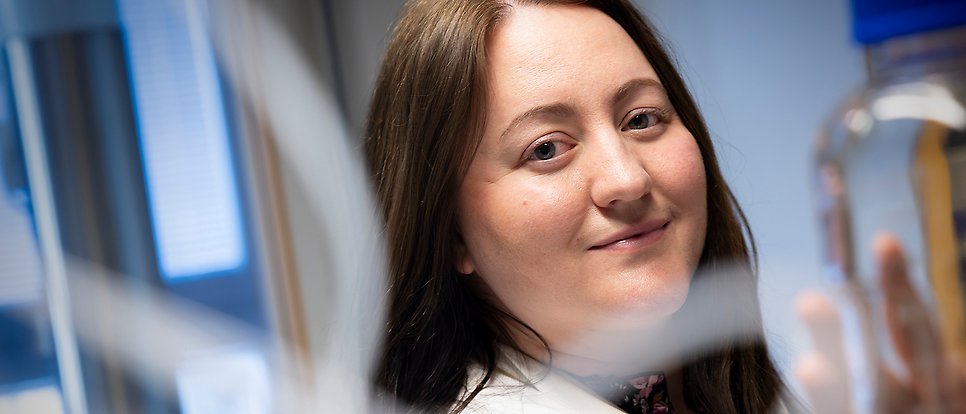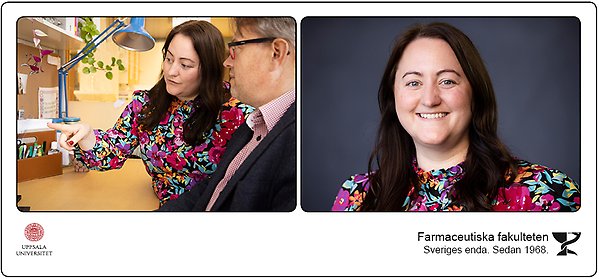Drug metabolism and doping control

Research on drug metabolism with special focus on studies of metabolites in connection with doping control.
Pharmaceutical substances are metabolized via enzymatic reactions in various organs of the body. In many cases, the drug metabolites are more pharmacologically active than the parent substance and sometimes even toxic. Our group studies metabolites that provide extended time of detection in doping control. We also focus on investigating the metabolism of potential doping substances that are not registered as drugs, but are available online.

Our group has a special interest in studying metabolites in conjunction with doping control. Many doping substances are metabolized to such a high degree that there are no traces of the parent compound in a urine sample taken just a few hours after drug administration. The possibility to detect metabolites can in many cases extend the detection time significantly. However, the prerequisite is that there is sufficient knowledge of the metabolite profile of the substance in question.
Many potential doping compounds are not registered as pharmaceuticals, but are easily available on the Internet. One example of such a substance class is the Selective Androgen Receptor Modulators (SARMs). Metabolic studies are carried out in in vitro and in vivo systems and the identification of the metabolites formed are initially investigated with liquid chromatography coupled to high resolution mass spectrometry (UHPLC-HRMS). For a full confirmation of the structures, we have also used NMR and synthesized reference material.
Four medalists from the Olympic Games in Athens 2004 lost their medals eight years after the games. How could that happen? Doping control samples from the Olympics are frozen and saved for many years during which time the analytical methods are refined and the possibility of finding prohibited substances are increased. In the urine samples of two of these athletes, metabolites of the anabolic steroid oxandrolone were identified in 2012. This was not possible during the games in 2004, since these metabolites were unknown at the time. In 2012, the problem had been solved within a Ph.D. project in our group at the Department of Medicinal Chemistry in collaboration with the National Veterinary Institute (SVA).
An in vitro system consisting of a fungus of the genus Cunninghamella was used to synthesize two metabolites of oxandolone, in sufficient amount for full structural determination and use as reference compounds. Since these metabolites could be detected in urine for a much longer time after drug treatment than the parent compound, it could be concluded that the two athletes were doped with the anabolic steroid oxandrolone. Thus, they were disqualified and their medals were revoked eight years after the Olympic Games.
Current collaborations are with the German Sport University Cologne, University of California in Davis and University of Kentucky.
Current publications
- Equine in vivo metabolite profiling of the selective androgen receptor modulator LGD-3303 for doping control (Nilsson Broberg, Malin. Knych, Heather. Bondesson, Ulf. Pettersson, Curt. Stanley, Scott. Thevis, Mario. Hedeland, Mikael. Journal of Pharmaceutical and Biomedical Analysis, ISSN 0731-7085, E-ISSN 1873-264X, Vol. 233, article id 115468)
- Investigation of Equine In Vivo and In Vitro Derived Metabolites of the Selective Androgen Receptor Modulator (SARM) ACP-105 for Improved Doping Control (Nilsson Broberg, Malin. Knych, Heather. Bondesson, Ulf. Pettersson, Curt. Stanley, Scott. Thevis, Mario. Hedeland, Mikael. Metabolites, ISSN 2218-1989, E-ISSN 2218-1989, Vol. 11, no 2, article id 85)
In the press
- Fyra från Aten-OS fråntagna medaljer (Expressen)
Contact:
Mikael Hedeland, Professor
Department of Medicinal Chemistry
Mikael.Hedeland@ilk.uu.se
Project members
Contact
- Mikael Hedeland
- Institutionen för läkemedelskemi, 070-657 1663
